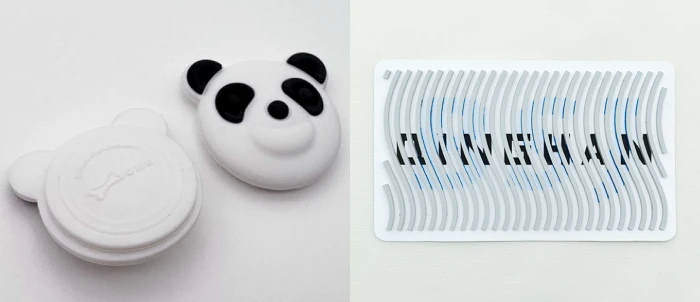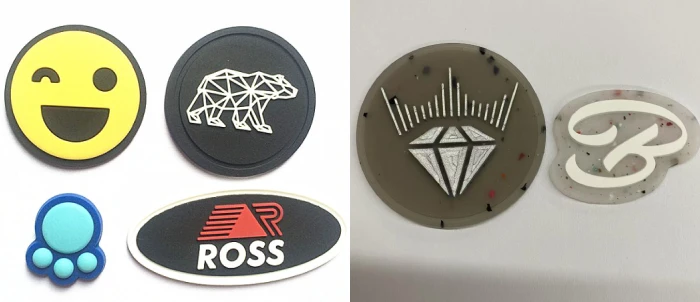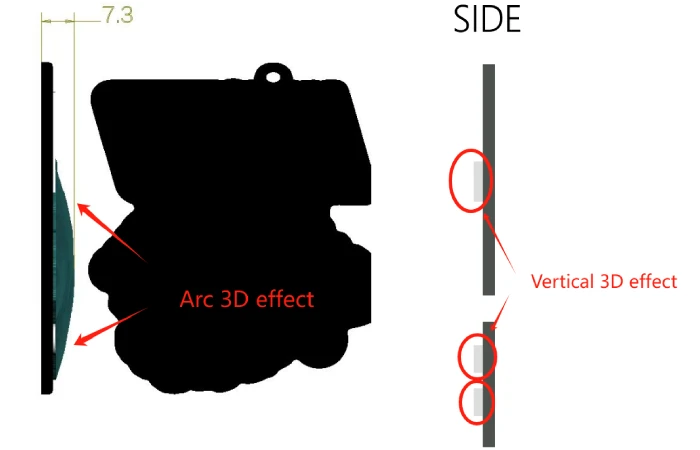When it comes to decorative elements in clothing and accessories, silicone patches and PVC patches are two of the most popular options. Each material offers distinct advantages and characteristics, making them suitable for different applications. If you’re wondering which patch type best fits your needs, this comprehensive guide will help you make an informed decision.
Understanding the Material Differences
The primary difference between PVC and silicone patches lies in their material composition.
- PVC (Polyvinyl Chloride): PVC is a synthetic plastic made from polymerized vinyl chloride monomers. It is known for its chemical stability and corrosion resistance. However, PVC tends to be relatively rigid unless plasticizers are added to enhance its flexibility.
- Silicone: Silicone is primarily composed of silicon dioxide and is classified as a thermosetting elastomer. It offers superior elasticity, softness, and chemical stability. Silicone is non-toxic, odorless, and often meets food-grade safety standards.
Understanding these fundamental differences is essential when choosing between PVC patches and silicone patches für Ihr Projekt.
Visual Appearance and Texture
Visual appeal and tactile sensation are important factors in selecting the right patch.
- PVC-Patches: PVC products generally have a rougher surface compared to silicone, but advanced manufacturing techniques allow for vibrant colors and varying levels of transparency. If you’re looking for patches with bold, eye-catching colors, PVC could be a strong choice.

- Silicone Patches: In contrast, silicone patches offer a smooth, matte finish with more muted color options. While they may not be as bright as PVC patches, their understated elegance appeals to many fashion and sports brands.

Touch and Feel:
- PVC patches feel harder and less elastic, although additives can adjust the flexibility.
- Silikonpflaster feel soft, stretchy, and much more comfortable against the skin, making them ideal for garments worn close to the body.
Applications and Popularity
Both PVC and silicone patches serve different markets based on their properties.
- PVC-Patches: Thanks to their durability and abrasion resistance, PVC patches are commonly used for industrial workwear, outdoor gear, backpacks, and colorful keychains. However, one must be cautious because PVC becomes brittle in cold conditions (below -30°C) and can soften or melt under high heat.

- Silicone Patches: Their softness and non-toxic properties make silicone patches perfect for children’s clothing, sportswear, and fashion accessories that come into direct contact with the skin. With growing global standards for environmental friendliness and recyclability, silicone has gained immense popularity, especially in Europe and other developed markets. If you prioritize comfort, safety, and eco-friendliness, silicone is the future-forward choice.

Key Manufacturing Considerations
Creating high-quality PVC or silicone patches requires different manufacturing approaches.
- PVC-Patches typically involve mold forming, injection molding, and surface finishing. Aluminum molds, which are relatively inexpensive, are commonly used. PVC patches can easily incorporate multiple colors, adding versatility to design options.
- Silikonpflaster demand higher-end copper molds, which are more costly to produce. To achieve the best visual results, it’s advisable to limit the number of colors to three or fewer per patch. Despite these limitations, both materials can achieve 3D effects such as raised or arched surfaces, providing excellent branding or decorative value.

Understanding the manufacturing process can help you plan your project budget and timeline more effectively.
Cost Comparison
When cost is a deciding factor, it’s important to know that silicone patches generally cost more than PVC patches. The higher price is due to the expensive raw materials, more complex mold production, and more stringent environmental compliance requirements associated with silicone.
If you’re working with a tight budget and need durable patches for rugged applications, PVC may be your best bet. However, if comfort, safety, and environmental responsibility are priorities—especially for baby clothing, sportswear, or premium fashion—silicone patches are well worth the investment.
Abschluss
Choosing between PVC and silicone patches depends on several factors: material properties, visual preferences, tactile experience, usage scenarios, and, of course, your budget.
- For rugged, vibrant, and cost-effective applications, PVC patches are highly effective.
- For eco-conscious, skin-friendly, and high-quality branding solutions, silicone patches stand out as the ideal choice.
By carefully evaluating your project’s specific needs, you can select the patch material that best complements your brand identity and customer expectations. Whether you’re developing uniforms, fashion apparel, children’s clothing, or outdoor gear, understanding the strengths of silicone patches and PVC patches will ensure your products are functional, stylish, and future-ready.



